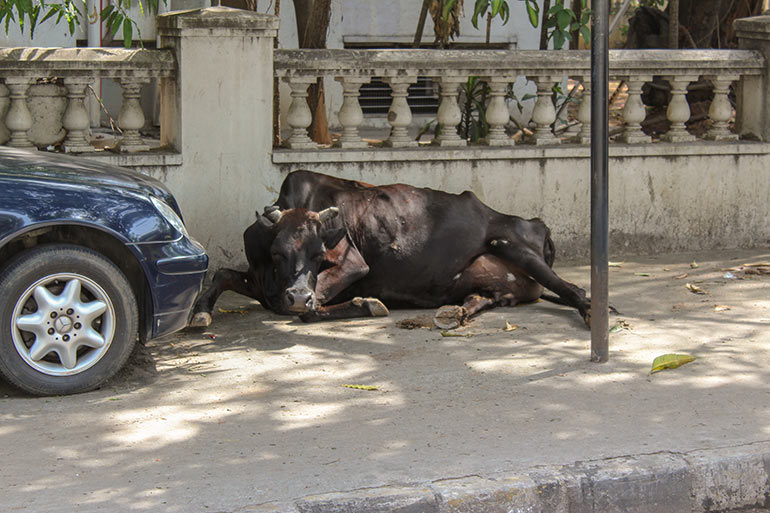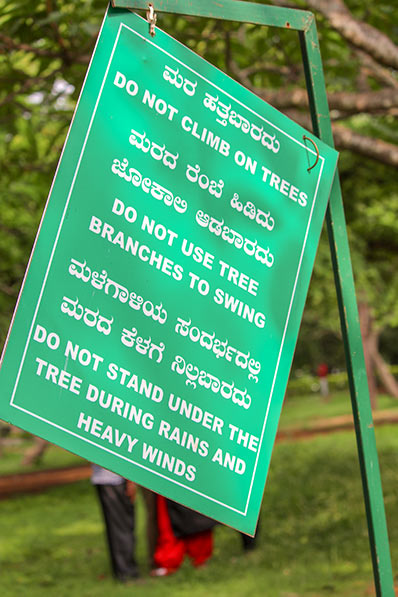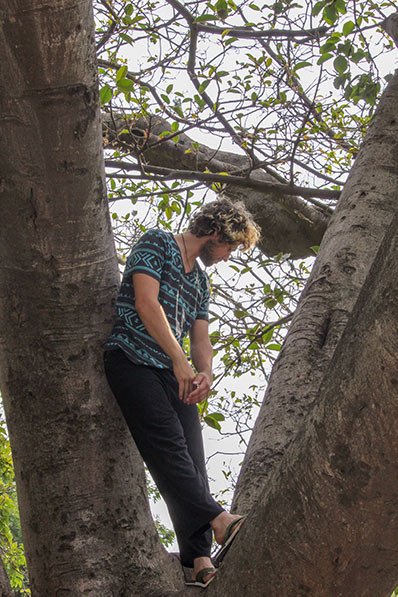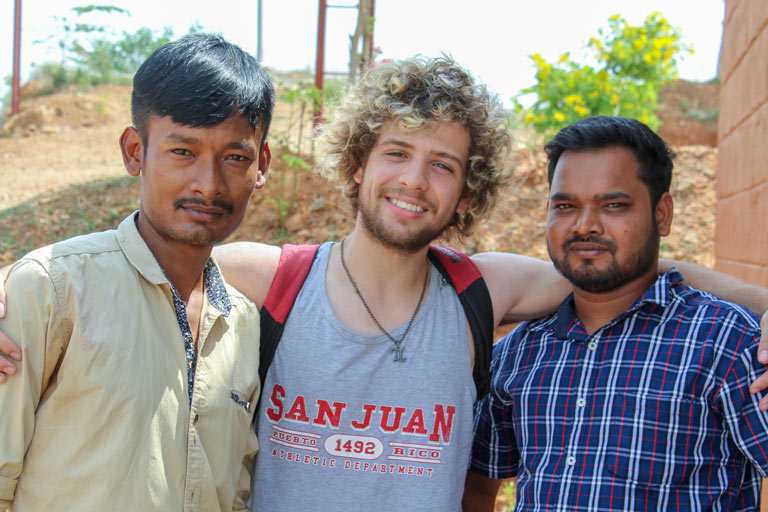Cameron Hale: Student Report from 2018 Alternative Summer Break to India
I have traveled outside the US on a couple of occasions (S.Korea and Puerto Rico), but this trip to India showed me a culture which I have never before seen. Throughout the trip, I was welcomed with unbridled hospitality everywhere I went from the United Theological College where we were received, to the small village near Patirahalli where we stayed. All of the individuals who spoke with us were very courteous and good-natured, always making sure that we were well and making sure to consider our opinions for the day ahead.
Our trip took us through the considerably large city of Bengaluru, with a population of 10 million, which was in the state Karnataka, as well as through a few small cities and villages in the state of Tamil Nadu. In doing this, I feel like I was able to see and appreciate the differences between the city and countryside of India.
The project we worked on was different than I expected, but the work we did was productive. Our task was to help start the preparation of an environmentally friendly living area on the top of a small mountain. As such, we dug holes, planted over 100 trees, created bricks (which used the mud and clay from the mountain where the buildings were to be built), and also created a clearing for a natural water reservoir. These tasks were physically intense, with the blistering sun directly overhead, often without shade. However, we worked from the morning ‘til noon, then took a break; then from the afternoon ‘til six or so, which spared us from the worst of the sun.
During this project, I was able to experience true Indian heat. My only, perhaps the word is misgiving, with this project is that it felt more capitalistic than altruistic. I mean to say this because we were doing work for the person who provided us with food and housing, which was splendid and comfortable. However, it did not feel as good as perhaps building water collection facilities for those without water might have.
I wish to note some significant cultural differences between India and America, keeping in mind that we visited Southern India and that the culture in the South may be different than the culture in the North. The most immediate thing that I noticed upon arriving at 5.00 a.m. from the flight, was the driving behavior. Since India was at one time a British Colony, they drive on the left side of the road; however, this was not what surprised me most. Very rarely were turn signals used, and upon turning or merging, a driver would honk their horn. Similarly, honking was performed before sharp turns, hills, or any other situation where communication was required. Furthermore, seeming to reflect the close-packed population, vehicles were regularly within a few inches of each other in traffic. While the driving patterns seemed dangerous and chaotic to a foreigner like me, I became used to it before the trip was done, and I never witnessed a car accident, despite the closeness.
I also noticed that people do not particularly worry about vehicles when crossing the street, as I regularly saw people walking in the streets during rush hour traffic; some people would even try to sell things to the drivers as they passed, often going as far as to knock on windows of passing vehicles.
Another thing I witnessed firsthand was the motorcycles and scooters, which appeared to comprise approximately half of the vehicles on the roads. I once saw a family of four packed onto a motorcycle, which was apparently not uncommon.

My last comment towards the traffic situation goes to the animals, which would fearlessly walk onto the road, both in the city and countryside. The average driver handled this by honking and slowing slightly unless it was a cow, which they would wait for it to pass, or drive around it. In my opinion, stereotypes towards Indians ‘worshipping’ cows seem to be blown out of proportion. However, I could tell that there is a large respect for the animal, as many were well taken care of.
South India is a primarily vegetarian region, which influences a large majority of the food there, as well as the attitude towards animals. Unlike in America, many animals had a few bones showing, but were left relatively free to roam and graze as they pleased. This is likely because they don’t fatten up many animals to eat in the South, but they do consume milk and eggs.
This is not to say that there are no places that serve meat in the south. Naturally, Burger King, KFC, and McDonald’s made their way to India, but they mostly serve chicken. More traditional restaurants may serve chicken or mutton (goat), but they tend to leave the bones in the meat. This was quite a surprise when I took a bite of Chicken Fry and found a bone in my mouth, but the flavor was undeniably amazing. This occurred similarly with the mutton. I was most surprised that the food in India was not particularly hot (spicy), however, this may have been since we were in the South.

Another primary difference I noted was the language. Almost every state in India, of which there are around 30, has its own language. Furthermore, Hindi is the official language of India, and since the British were involved, almost every city has a lot of English language mixed in. As a result, most signs, ads, or political campaigns will appear in at least English and the State’s language, occasionally adding Hindi as well. This also leads to many Indians who live in large cities to know several languages, usually around five or so.


I would now like to note the differences between modern and traditional temples that I noticed. Traditional temples were usually found out in the countryside and were primarily stone based. They consist of a stone wall which separates the temple courtyard from the outside. There was usually a large gateway with ornate stone carvings of various gods, demons, or other deities in a rainbow of pastel colours. The view was simply breathtaking. Inside the courtyard lay the actual temple where you could present food and incense offerings as well as monetary donations, as well as pray, or receive blessings. The ceiling of the traditional temples was covered in beautiful traditional paintings of whichever god or goddess the temple was dedicated to, which may have been influenced by the region.
However, these temples were quite small in comparison to modern temples. We visited a more newly-constructed temple in Bengaluru. The temple was so large that we had to wait in line maybe half a mile just to get in after passing two security stations. The line was packed with people, all of which (including us) were required to be barefoot. There was even a section where we chanted an incantation in Hindi 108 times, taking a step between each incantation, known as the Hare Krishna. Once that was complete, we rang a large bell and entered the temple, which was absolutely packed. Everyone in the entire temple was shoulder to shoulder. The artwork was remarkable; lifelike depictions of various gods were painted intricately on the domed ceiling. Furthermore, the modern temple was covered in statues, which in turn, were covered in gold. Gold was everywhere and it was quite brilliant. My only criticism of the modern temple, besides their lack of exits, was that it seemed to be a money-generator, with roughly 100 vendors in the temple itself.
I found my time in India to be quite different than in the United States, but in no way uncomfortable. I do lament the fact that the trip was so short and that we could not see North India. I implore anyone who is curious to visit India, I found the culture to be an eye opener and the people to be hospitable.
